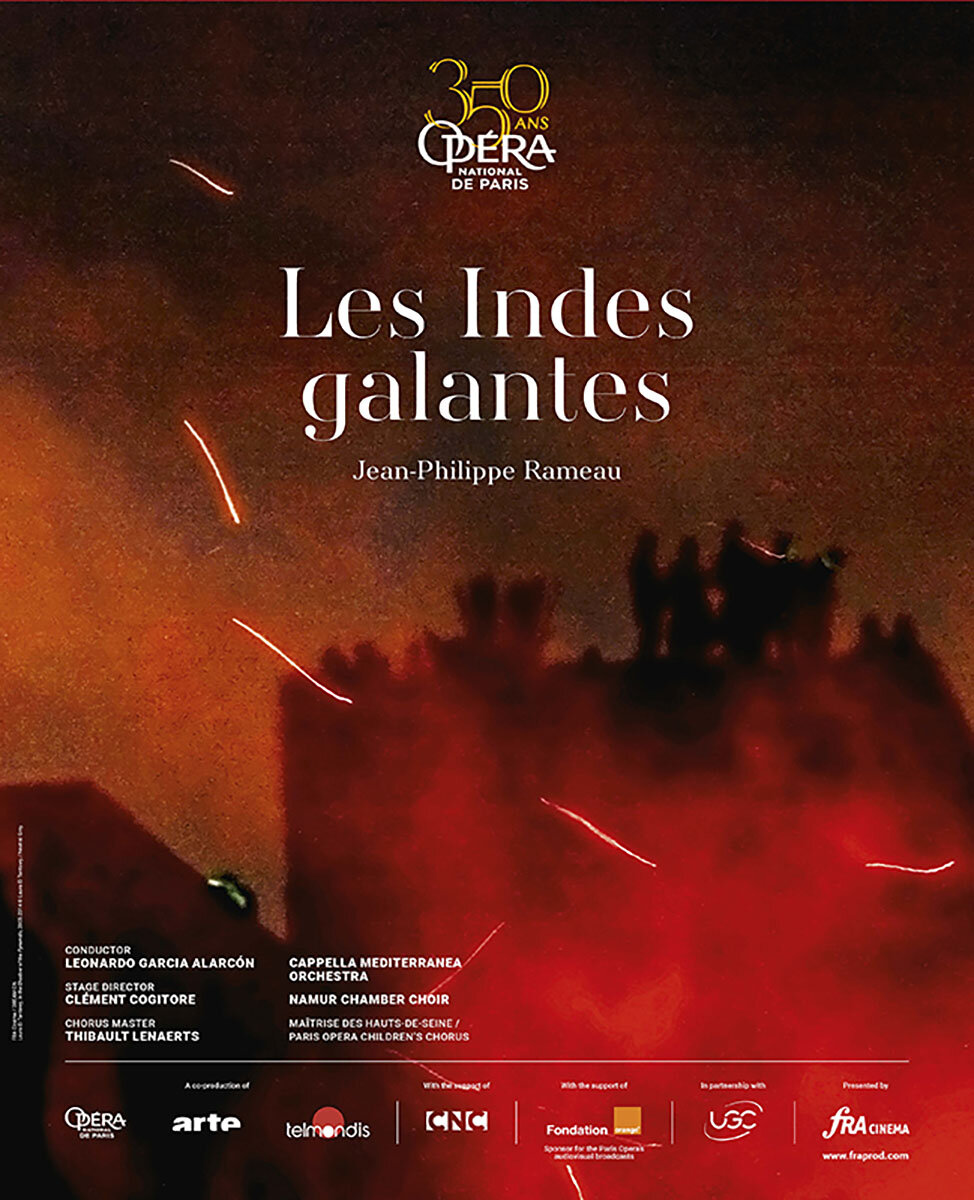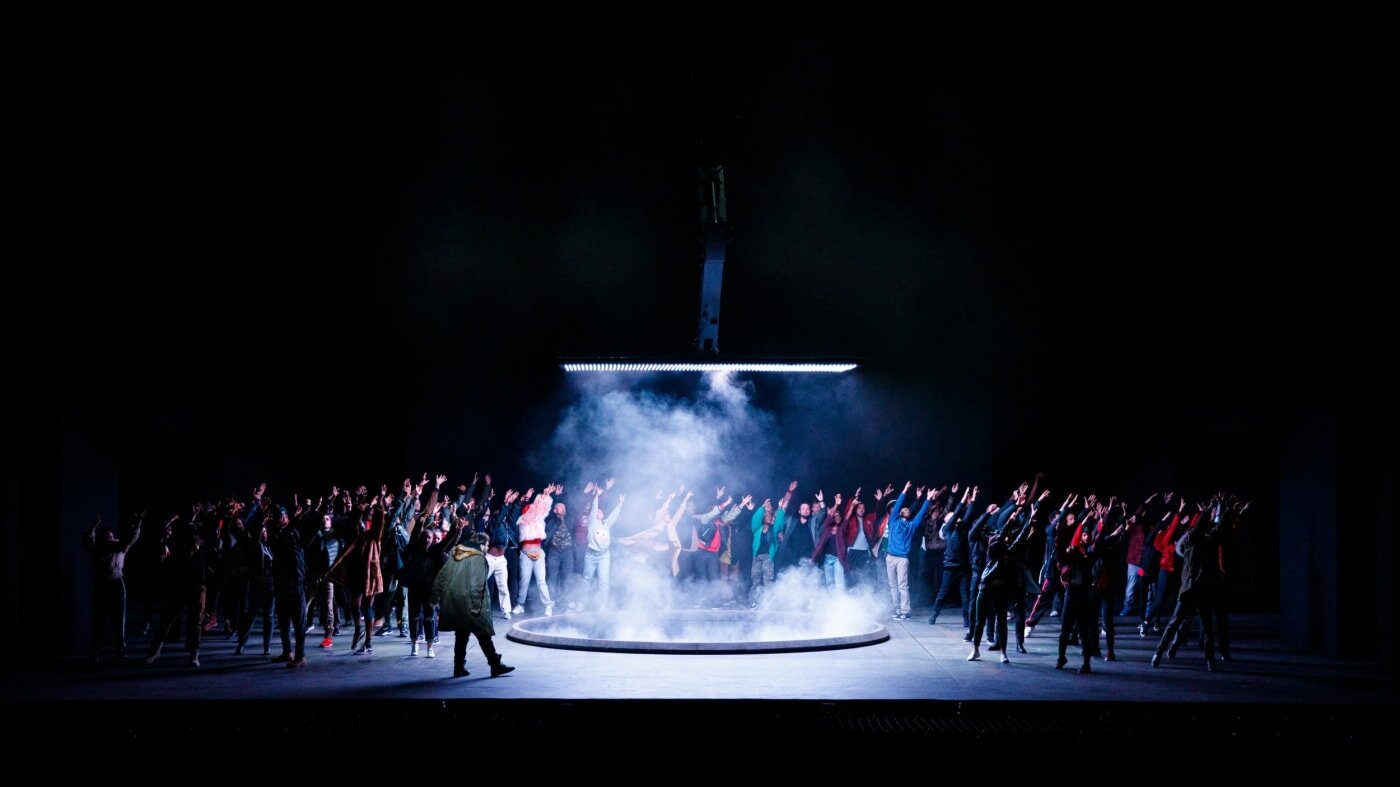
Mara Ahmed
I recently came across an astonishing production of Les Indes Galantes, an 18th century opéra-ballet by Jean-Philippe Rameau, choreographed by Bintou Dembélé for L’Opéra Bastille in Paris.
Opéra-ballet is French Baroque lyric theatre or a loose blend of narrative, singing, and over-the-top dance numbers. Les Indes Galantes (The Amorous Indies) premiered at the Paris Opéra in 1735. Such hybrid works being all the rage in those days, it was performed more than 60 times in its first two years. It recounts four separate love stories, each set in an exotic locale: a Turkish pasha on an island in the Indian Ocean; a love triangle in Peru involving Spaniards and Incas; love between slave owners and slaves in Persia; and finally the fourth and final act, Les Sauvages, which takes place in North America. European enlightenment, with its foundational construct of otherness, needed to venture beyond its frontiers through imperial conquest and missionary zeal. Its violence and domination were justified by the production of Orientalist stereotypes and the enforcement of racial, cultural and religious taxonomies. The provenance of Les Indes Galantes is, therefore, grounded in racism and French colonial hubris.
Bintou Dembélé, born of Senegalese parents in the Parisian banlieues, is considered a Hip Hop pioneer in France. In her Paris Opera debut in 2019, she set out to subvert the colonial ideology of Rameau’s work by using street dance such as krump, waacking and voguing. She sees dance as “des gestes marrons” that honor the memory of slaves, marronage signifying resistance and escape from plantations, and the constitution of new communities on the outskirts of slave systems. How do these breakouts and rebellions manifest themselves in movement? For Dembélé, it’s through canny evasion and dodging, so that one can remain standing. It’s continuing to groove and take up space in spite of oppression, slavery, police brutality, colonialism and invisibility.
The clip I saw online was choreographed to “The Dance of the Peace Pipe” from Rameau’s fourth act.
The music is vigorous, almost heroic, and the dancers, mostly people of color, seem conjoined—a living, breathing human organism. At the same time, Dembélé gave the dancers free rein to perform their solos with unrestrained brilliance and emotion. They riff off of one another, moving in and out of the periphery and onto center stage. It’s a heaving mass of humanity at once collective and individual, responding to all of its diverse, composite parts. One can feel the waves of passion and resolve throbbing in its aggregate body. It’s something beautiful and fortifying that one connects with viscerally. I felt the jolt of it through my computer screen.
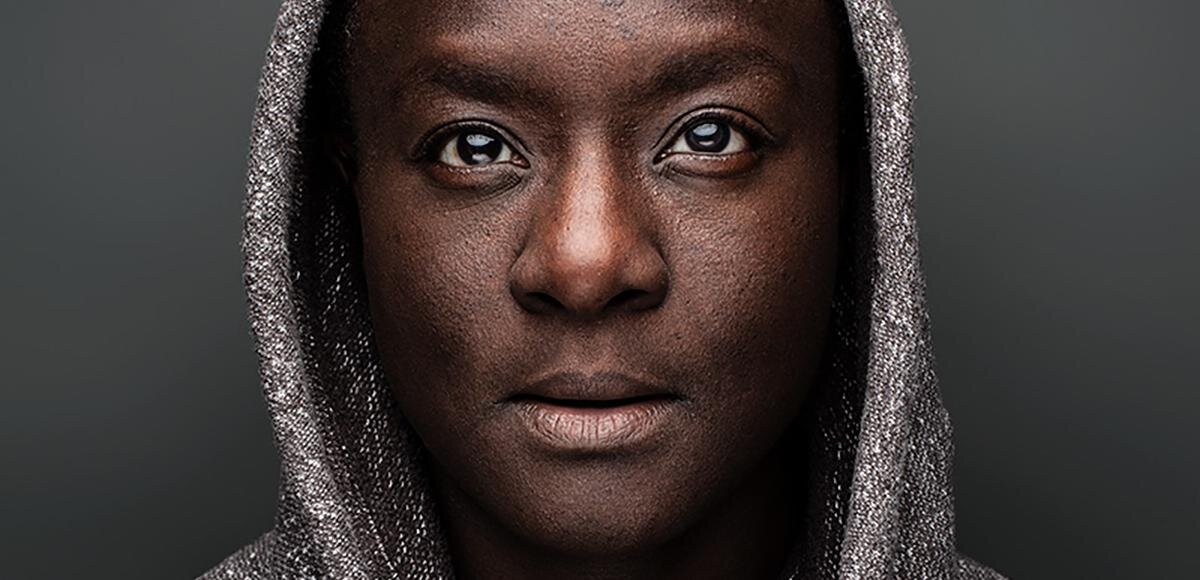
Surprisingly, stunning art like this doesn’t always find support. Dembélé is the first Black woman choreographer to be engaged by the Paris Opera, in its 350-year history, yet the company’s promotional materials omitted this important fact.
In an interview with Jannie McInnes, for The September Issues, Bintou Dembélé explained:
“In France, the word ‘race’ was removed from the constitution in 2018. There is something ambiguous about this decision: while its intention is to discard a historical and biological imaginary captured by this word, it also expresses a type of denial, a French difficulty with reflecting on the question of skin color. Moreover, in France, those who decry the under-representation of Afro-descendants find themselves regularly reproached for being obsessed by this issue, for seeing the world exclusively through this prism—in short, for being ‘racist.’ This denial leads to invisibility for artists of color, colonized communities, and large swathes of French society. Hence the challenges we have in performing on contemporary stages and telling our stories in ways that are legible to those audiences.”
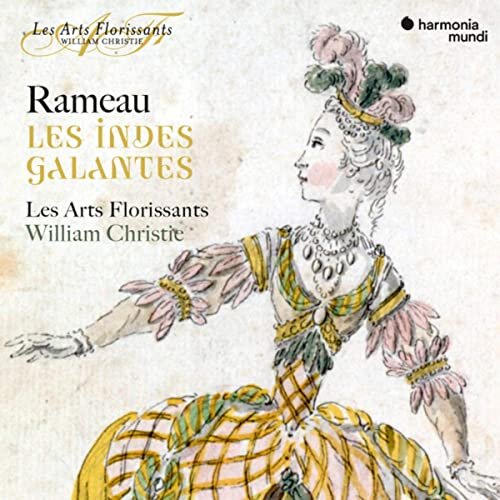
I was an immediate fan of Dembélé’s choreography and the energy she mobilized through her sharp, expressive dancers. Not having seen a performance of Les Indes Galantes prior to my introduction to this exhilarating interpretation, I wanted to learn more about what it was that Dembélé had set out to subvert. As any reasonable person living through a pandemic, I googled Rameau’s opera and came across two productions.
The first one is by Les Arts Florissants, founded and directed by William Christie. It dates back to the mid 2000s and in the fourth act, embraces 20th century stereotypes of what indigenous peoples wear and look like. Apart from dancers donning buffalo masks (possibly) and walking on all fours, there is some traditional, quintessentially North American chicken dance and valiant singing whilst smoking corncob pipes. What is less hackneyed, but equally farcical, is the inclusion of “Walk Like an Egyptian” dance moves. An homage to the 1980s?
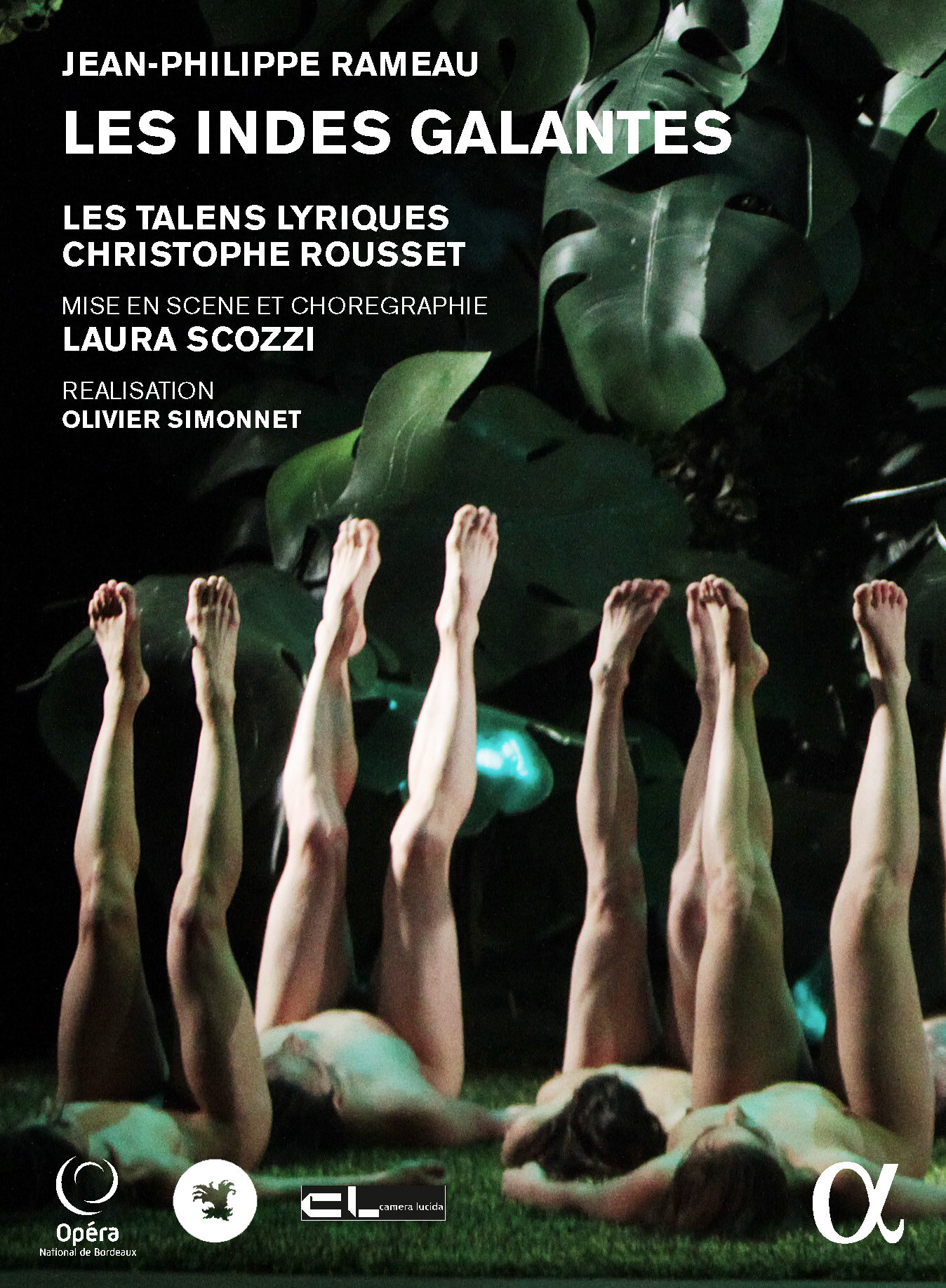
The second version, which can be seen in full online, is a production by Les Talens Lyriques, directed by Laura Scozzi for the Opéra National de Bordeaux. It dates back to 2014. Rameau’s prologue, a discussion between god-like figures about love and its entanglements, is turned into a random romp with lots of naked people, doing little besides being naked. I guess we’re all familiar with the maxim that nudity = high art. Scozzi, an Italian choreographer, tried to modernize the opera’s exoticism by superimposing modern themes such as human trafficking, refugee hardships, violence against women, and environmental degradation.
These scenes, besides being cartoonish and slackly choreographed, are alive with France’s colonialist obsession with Islam and the veil. In order to seem just, Scozzi added blond, white women in underwear being sexually objectified and manhandled on stage. She also shows women in bright patterned burkas running around with H&M bags and cheek-kissing jauntily (in the end, capitalism will save us all). But the bus stop signage in Arabic (“in the direction of Yemen”), the oriental carpets hanging from a clothesline, the burka clad woman walking behind a man, her head bent, and the child in a sequin burka with her teddy bear being married off to an adult male are nauseating. A privileged white woman, speaking for women of color, submitting them to her Orientalist gaze, and articulating them in her own jaundiced language is nothing new. Yet it never ceases to repulse.
That this Charlie Hebdo-ish caper or the racist cartoon by Les Arts Florissants could be funded and allowed onto any stage is a marvel. Bintou Dembélé’s work is not just political subversion, it’s exceptional art, whereas these other two productions succeed rather easily in showcasing white mediocrity. This is why it bears repeating that decolonizing art/culture is not just good for politics, it also makes for unquestionably better art.

Join Our Community
TMR exists thanks to its readers and supporters. By sharing our stories and celebrating cultural pluralism, we aim to counter racism, xenophobia, and exclusion with knowledge, empathy, and artistic expression.
Learn more


